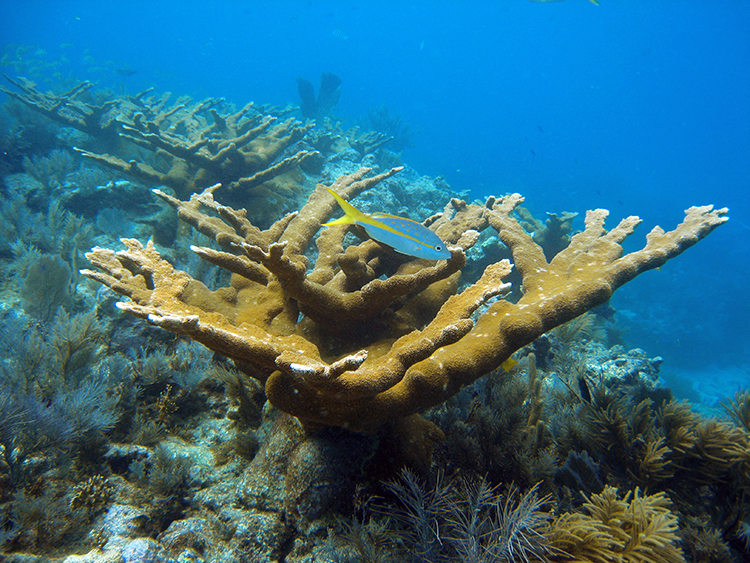Amidst global declines in coral reefs, restoration practitioners and managers are increasingly considering incorporating built structures in restoration. However, information on how built structures have been used in coral restoration is not readily available to help inform management decisions. In this project, we address this information gap through an assessment of the current state of knowledge on the design, siting, implementation, and performance of built structures incorporated into coral restoration and related applications, including environmental mitigation and coastal protection. This synthesis includes ecology, engineering, and hydrodynamic variables. Our findings will provide guidance for management decisions on potential applications of built structures in shallow, tropical reef restoration.

Why We Care
Coral reefs face a variety of threats from local impacts, such as coastal development, ship groundings, and storm impacts, to global impacts that include temperature stressors and sea level rise. Coral reef restoration, preservation, and mitigation proposals increasingly include the use of built structures, such as custom-designed reef modules, repurposed artificial materials, placed natural rocks, and underwater artwork, to form substrate for corals. Built structures have been and continue to be deployed for coral restoration and related applications that include environmental mitigation and coastal protection. However, key questions remain on how built structures should be considered in management and restoration decisions, and what types have been successful for specific applications and environments.
We will help address this barrier by assessing the global state of knowledge on built structures in coral reefs to help inform management decisions.
What We Are Doing
We are identifying and compiling published evidence on the use and performance of built structures in coral reef–related applications through a global synthesis of primary literature. We are using a method called “systematic mapping,” which is the gold standard among synthesis techniques for summarizing the distribution and abundance of existing evidence (e.g., published data or findings on a topic). The project team includes scientists from NCCOS, the U.S. Army Corps of Engineers – Engineering with Nature, as well as from the U.S. Geological Survey.
Benefits of Our Work
This project will highlight the state of knowledge on the use of built structures in coral restoration and related applications that include environmental mitigation and coastal protection. Specific questions that we will address are:
-
- What types (e.g., reef modules, concrete pipes, mesh over rubble, natural rock) and materials (e.g., concrete, rock, metal, fiberglass) of built structures have been used in coral reef–related applications?
- What is the distribution and abundance of evidence on ecological (e.g., coral recruitment, coral condition) and physical outcomes (e.g., waves, erosion) of built structures?
- How does the evidence on built structures differ by geographic region, spatial scale, and seascape setting (e.g., depth relative reef location)?
Answers to these types of questions will be used to help guide management decisions regarding the design, siting, and implementation of built structures as a type of “gray-green” infrastructure in coral reefs.
Next Steps
-
- Develop a protocol to serve as a “recipe” for the evidence synthesis that outlines the search strategy, data sources, and data extraction. The protocol will be published as a peer-reviewed journal article.
- Implement the synthesis protocol to discover evidence on the use of built structures in coral restoration and related initiatives stemming from primary literature.
- Develop a database of evidence on built structure use and outcomes.
- Synthesize evidence to identify knowledge clusters and knowledge gaps. Findings will be published as a peer-reviewed journal article.
